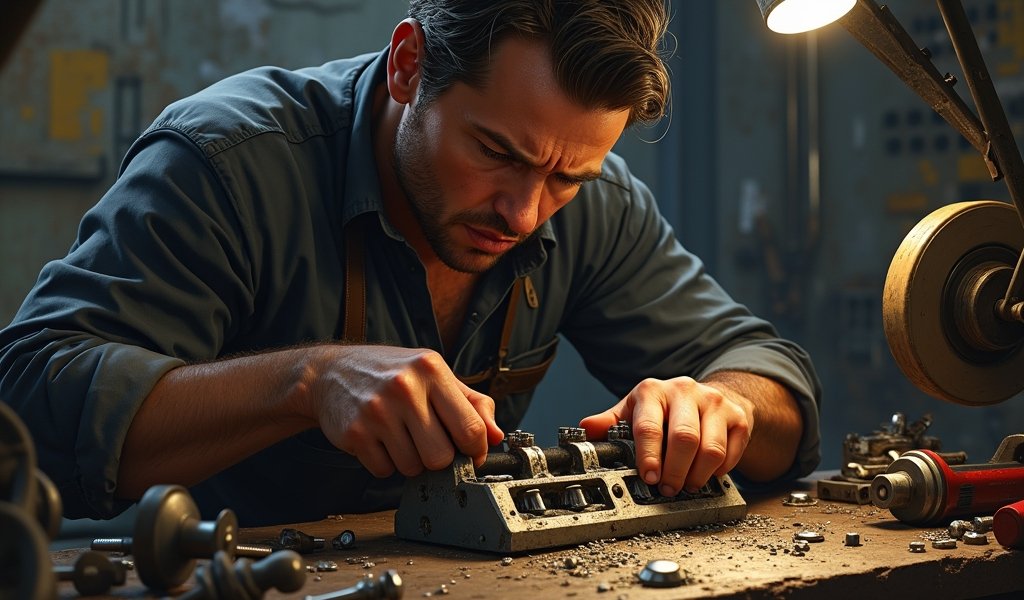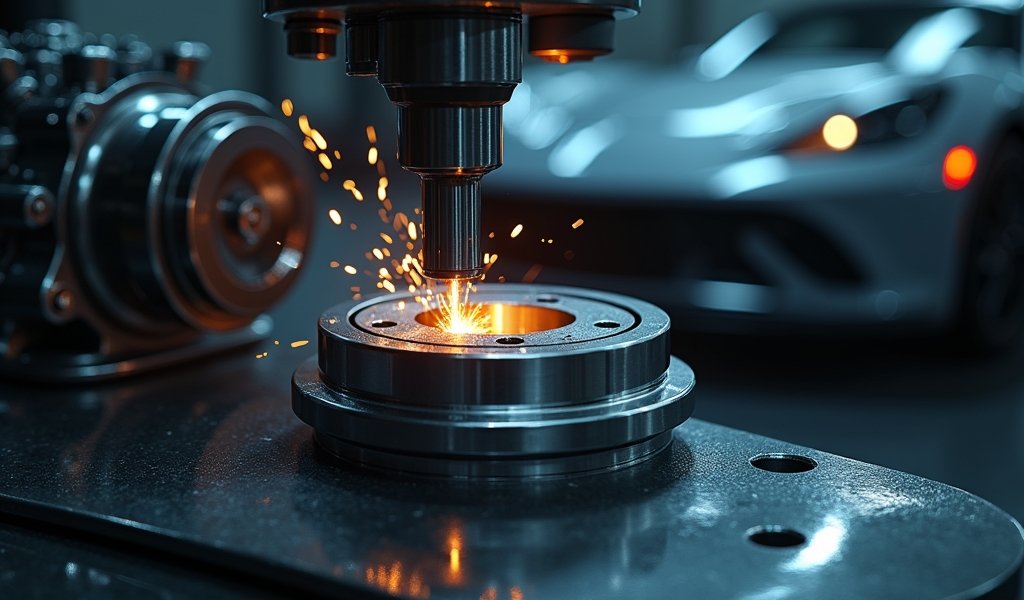Overview
This article provides five essential tips for achieving proper valve seat grinding angles in engine maintenance, explaining how selecting the right angle combinations, stones, and techniques directly impacts engine performance and longevity. It emphasizes the critical importance of precise three-angle cutting methods, achieving optimal seat width, and verifying work through proper testing to ensure maximum sealing capacity and airflow efficiency.
Table of Contents
- Understanding Valve Seat Grinding Angles
- The Importance of the Correct Valve Seat Grinding Angle
- Tip 1: Select the Right Angle Combination for Your Engine Type
- Tip 2: Proper Stone Selection Makes All the Difference
- Tip 3: Master the Three-Angle Cut Technique
- Tip 4: Achieving Perfect Seat Width
- Tip 5: Verify Your Work with Proper Testing
- Conclusion
- Frequently Asked Questions
Understanding Valve Seat Grinding Angles
The valve seat grinding angle is arguably the most critical factor in valve job performance, yet it’s often misunderstood or overlooked by many DIY mechanics. I’ve spent over 25 years working with engines, and I can tell you firsthand that getting this angle right can be the difference between an engine that purrs like a kitten and one that struggles to maintain compression.
When we’re talking about valve seat grinding angles, we’re referring to the precise angle at which the valve seat (the surface in the cylinder head where the valve face makes contact) is machined. This isn’t just some arbitrary number—it’s a carefully calculated specification that affects everything from sealing capability to airflow efficiency.
Most production engines use combinations of angles between 30 and 45 degrees for the main seating surface, but there’s much more to it than that. In high-performance applications, you’ll often see multi-angle valve jobs incorporating three or more distinct angles to optimize flow characteristics while maintaining proper sealing.
The Importance of the Correct Valve Seat Grinding Angle
Let’s get straight to the point: the valve seat grinding angle directly impacts your engine’s performance, efficiency, and longevity. It’s not simply about matching numbers in a service manual; it’s about understanding the relationship between these angles and how they work together.
When valve seats are ground at incorrect angles, you’re looking at a host of potential problems. Poor sealing leads to compression loss, which translates to reduced power output and decreased fuel economy. Heat transfer from the valve to the cylinder head is compromised, potentially causing valve overheating and premature failure. Even the combustion efficiency suffers, as improper angles can create turbulence or restriction in the intake and exhaust flow.
I’ve seen countless engines brought into my shop with mysterious performance issues that all traced back to improperly ground valve seats. It’s one of those hidden factors that separates a professionally built engine from an amateur job. The difference might not be visible to the untrained eye, but it’ll be immediately apparent in how the engine runs.

Tip 1: Select the Right Angle Combination for Your Engine Type
Choosing the correct valve seat grinding angle isn’t a one-size-fits-all situation—it varies based on your specific engine application. Performance engines, daily drivers, and heavy-duty work engines all benefit from different approaches.
For most standard passenger vehicles, a traditional 45-degree seat angle paired with 30-degree top and 60-degree bottom cuts creates a reliable configuration. This setup provides a good balance of sealing capability and moderate flow characteristics. It’s what professional engine builders have relied on for decades in stock rebuild applications.
If you’re working with a performance engine, you might want to consider a 30-degree seat angle instead. This shallower angle improves airflow significantly, though it requires more precise machining and maintenance. Race engines often use this configuration to maximize breathing capacity at high RPMs.
Diesel engines and heavy-duty applications typically benefit from steeper angles (often 45-degrees or more) to withstand the higher compression ratios and combustion pressures. The steeper angle provides more robust sealing under these demanding conditions.
Here’s a quick reference guide for different engine types:
- Standard passenger vehicles: 45° seat with 30° top and 60° bottom cuts
- Performance/high-RPM engines: 30-35° seat angles for improved flow
- Heavy-duty/diesel engines: 45-50° seat angles for maximum durability
- Vintage/flathead engines: Often use 45° single-angle seats
Remember that these are starting points—the exact angles may vary by manufacturer and specific engine design. Always consult your engine’s service manual for the recommended specifications before beginning any valve work.
Tip 2: Proper Stone Selection Makes All the Difference
You wouldn’t try to paint a masterpiece with a frayed brush, and similarly, you shouldn’t attempt precision valve seat grinding with the wrong stones. The selection of grinding stones dramatically influences the quality of your valve job.
Silicon carbide stones have been the traditional choice for decades, but today’s high-performance valve seats—especially those made from hardened materials or stellite—often require specialized stones. For these applications, consider CBN (cubic boron nitride) or diamond stones, which maintain their shape longer and cut more precisely on harder materials.
The grit progression is equally important. I always start with a coarser grit (around 150-220) for the initial cutting and shaping, then progress to medium (around 280-320) for refining the angles. For the final pass, a fine grit (400+) creates that smooth, polished surface that ensures proper valve seating and break-in.
Don’t overlook stone dressing—it’s not an optional step. A properly dressed stone cuts cleanly and maintains the exact angle you’re trying to achieve. I dress my stones before each valve seat to ensure consistency throughout the entire job. It takes a bit more time, but the results speak for themselves.
Stone pressure also matters significantly. Too much pressure generates excessive heat, which can warp the seat or glaze the stone. Too little pressure results in incomplete cutting and wasted time. The stone should cut with moderate, consistent pressure—you’ll develop a feel for this with experience.
Tip 3: Master the Three-Angle Cut Technique
The three-angle valve seat cutting method isn’t just for high-performance engines anymore—it’s become the standard approach for quality valve jobs across all applications. This technique creates optimal sealing while promoting better airflow than single-angle approaches.
Here’s how the three-angle technique works in practice:
- Bottom cut (typically 60-75°): This wider angle relieves the bottom portion of the seat, preventing interference and improving exhaust flow.
- Seat cut (typically 45° for most applications): This is the critical angle where the valve actually seals against the seat.
- Top cut (typically 30°): This narrower angle improves airflow into the combustion chamber and helps center the valve during closing.
The sequence matters tremendously. I always start with the bottom cut, then proceed to the seat angle, and finish with the top cut. This order ensures each subsequent cut doesn’t remove the critical seating surface you’ve just established.
The width of each cut requires careful control. The bottom and top cuts should be just enough to create the desired transition without excessively narrowing the actual seating surface. Think of it as creating a funnel shape that guides airflow while maintaining a precise contact band where the valve meets the seat.
One technique I’ve found invaluable is using marking compound on a test valve to verify the contact pattern after cutting. This visual confirmation ensures your three angles are working together properly to create the ideal sealing surface. According to Engine Builder Magazine, this verification step is often what separates professional-grade valve jobs from amateur work.

Tip 4: Achieving Perfect Seat Width
The width of the valve seat contact area is just as crucial as the angles themselves. Too wide, and you’ll restrict flow and reduce valve cooling. Too narrow, and you risk inadequate heat transfer and premature seat burning.
For most passenger vehicle applications, I aim for a seat width between 0.060″ and 0.080″ (1.5-2mm). Performance engines often benefit from slightly narrower seats—around 0.045″ to 0.060″ (1.1-1.5mm)—to maximize flow, while heavy-duty applications might need wider seats up to 0.100″ (2.5mm) for durability.
The location of the contact area on the valve face also matters. Ideally, the contact band should be positioned approximately in the middle third of the valve face. This positioning provides optimal support and heat transfer while allowing the valve to “bed in” properly during initial engine break-in.
One common mistake I see in DIY valve jobs is inconsistent seat width around the circumference of the valve. This usually happens when the grinding fixture isn’t perfectly centered or when the stone pressure varies during cutting. Take your time to set up proper alignment before making any cuts, and maintain consistent pressure throughout the grinding process.
To verify seat width, I use a simple but effective method: after grinding, I apply a thin layer of Prussian blue or similar marking compound to the valve face, then lightly tap the valve against the seat with a plastic-faced hammer. The resulting impression reveals both the width and location of the contact area. This real-world verification is worth far more than any theoretical calculations.
Tip 5: Verify Your Work with Proper Testing
Even the most meticulously ground valve seats need verification before final assembly. Proper testing not only confirms your work but can reveal subtle issues that might cause problems down the road.
The vacuum test remains one of the most reliable methods for verifying valve seat sealing. By applying a vacuum to the port with the valve closed, you can directly measure how well the valve seals against the seat. Most professional shops target a minimum of 25 inches of mercury retention for at least 30 seconds. Less than this suggests incomplete sealing that needs further attention.
Leak-down testing provides another valuable perspective. By pressurizing the combustion chamber with the valves closed, you can identify and quantify any leakage past the valve seats. For a rebuilt engine, I typically look for leak-down percentages below 5% for optimal performance.
Visual inspection using penetrating dye can reveal microscopic imperfections in the seating surface. Apply the dye to the valve seat, let it dwell according to the manufacturer’s recommendations, then clean and inspect. Any dye retention indicates potential leak paths that need addressing.
Remember that proper valve lapping after grinding can improve sealing dramatically. While lapping doesn’t replace precision grinding, it does help “marry” the valve to its seat, filling in minute imperfections. I use a high-quality lapping compound and a proper lapping tool with just enough pressure to create a uniform gray pattern on both the valve and seat.
As Underhood Service magazine explains, the final verification should include checking valve spring installed height and pressure after all seat work is complete, as the grinding process can alter these critical dimensions.
Conclusion
Mastering valve seat grinding angles isn’t just about following specifications—it’s about understanding how these precise cuts work together to create the heart of your engine’s breathing system. The five tips we’ve covered—selecting the right angles for your application, choosing proper stones, implementing the three-angle technique, achieving optimal seat width, and verifying your work—form the foundation of professional-quality valve work.
I’ve seen countless engines transformed by proper attention to these details. An engine with correctly ground valve seats runs cooler, breathes better, and simply lasts longer than one with hastily completed valve work.
Whether you’re rebuilding a classic car engine, preparing for race season, or simply wanting to ensure your daily driver performs at its best, investing time in proper valve seat grinding pays dividends in performance and reliability. The valve seat grinding angle might seem like a small detail in the grand scheme of engine building, but it’s one of those critical factors that separate good engines from great ones.
Remember that patience and precision are your greatest allies in this process. Take your time, verify each step, and don’t hesitate to start over if something doesn’t look right. Your engine will thank you with years of reliable service and performance that makes all that careful work worthwhile.
Frequently Asked Questions
What is the standard valve seat grinding angle for most engines?
The standard valve seat grinding angle for most production engines is 45 degrees. This is typically paired with 30-degree top cuts and 60-degree bottom cuts in a three-angle configuration.
Why are multiple angles used when grinding valve seats?
Multiple angles improve airflow while maintaining proper valve sealing and heat transfer. The three-angle approach (typically 30°/45°/60°) creates an optimal flow path while ensuring a precise contact area for sealing.
How wide should the valve seat contact area be?
For most passenger vehicles, aim for a valve seat width between 0.060″ and 0.080″ (1.5-2mm). Performance engines benefit from narrower seats around 0.045″-0.060″, while heavy-duty applications may need wider seats up to 0.100″.
Can I grind valve seats without specialized equipment?
While technically possible, properly grinding valve seats requires specialized equipment for precision and consistency. Professional valve grinding machines, stones, and measuring tools are essential for quality results.
How do I know if my valve seats need regrinding?
Signs include compression loss, uneven running, excessive valve noise, or failed leak-down tests. Visual inspection may reveal pitting, burning, recession, or uneven wear patterns on the seats.

